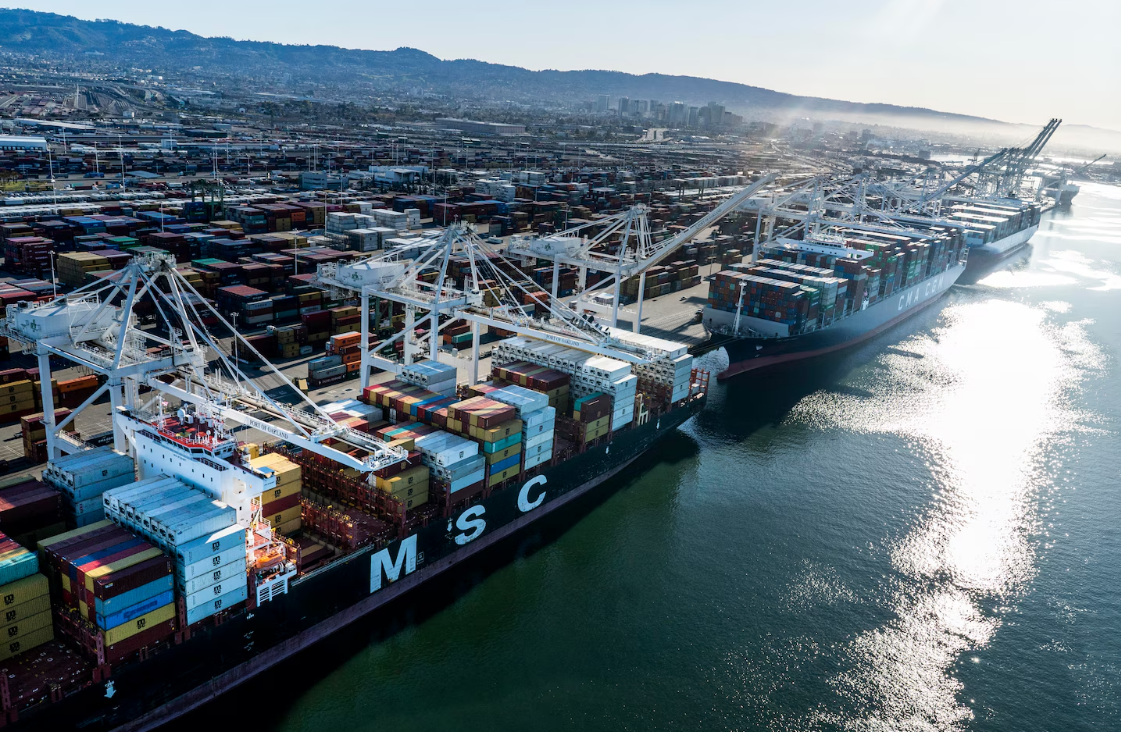Chinese Undersea Cables Carrying Internet Traffic Causes Tensions
According to analysts, the main focus of global conflicts involving China is growing the undersea lines that transport the majority of transcontinental internet traffic.
“Submarine cables are involved in every aspect of those rising geopolitical tensions,” Justin Sherman, a fellow at the Atlantic Council’s Cyber Statecraft Initiative, told Reuters. “When we talk about U.S.-China tech competition, when we talk about espionage and the capture of data.”
The wires are a topic of dispute between the U.S. and China and are a source of friction in China’s ties with Taiwan, a self-governing island that Beijing claims as its own territory.
The Chinese government declined to remark on the underwater lines when VOA Mandarin called the Chinese embassies in Beijing and Washington for a statement.
Cables between Taiwan and the Matsu Islands, which are under Taiwanese authority but are located close to China’s shore, were severed last month. The National Communications Commission stated that two ships unintentionally sliced the cables, and Taiwan’s government refrained from charging the Chinese government of cutting the lines on purpose.
The Associated Press cited statistics from Taiwan’s Chungwha Telecom that showed there had been 27 cable cuts over the previous five years. Once the fiber-optic technology inside is covered in shielding materials, each cable is about the width of a garden pipe. This allows it to be placed on the seafloor, where it is vulnerable to dangers like earthquakes, typhoons, ships’ moorings, and saboteurs.
In a February 21 piece in Foreign Policy magazine, Elisabeth Braw, an associate scholar at the American Enterprise Institute, hypothesized that the severed wires might be the product of China’s specific persecution of Taiwan.
The problem for Taiwan is that it’s not a military assault, she said, adding that “Chinese fishing vessels and other commercial vessels have been harming the cables connecting the Matsu islands to Taiwan a disproportionate number of times” over the past few years.
“And China can claim, ‘Oh, it was just business boats,’ and that the wires weren’t intentionally damaged or severed. Taiwan also cannot demonstrate that it was intentional. Therefore, it is very difficult to respond in kind and to safeguard those lines. You can’t have your fleet stationed on top of the wires all day long to watch out for damage or cuts.
Army repercussions
As Russia has demonstrated by attacking internet infrastructure in its onslaught on Ukraine, the loss of internet connections and the communication they provide has significant strategic repercussions.
According to Joseph Hwang, a member of the George Mason University associate staff, repairing the wires that were cut last month would require time and money.
He figured fixes would cost between $329,500 and $659,000 in U.S. currency, and said emergency repairs were anticipated to reach on April 20 at the earliest.
Investing in cable defense, deeper burying, and fake cables, as well as considering the establishment of legal structures that plainly explain the repercussions of unintentional or deliberate submerged cable destruction, are some of the recommendations he made for Taiwan, U.S. friends, and Asian allies.
According to American Enterprise Institute academics Dan Blumenthal and Frederick W. Kagan, if China invades Taiwan, “China can cut off lines of communication and interdict military and civilian supplies by air and sea, then Taiwan would eventually have to capitulate.”
The J.C. Wylie professor of marine strategy at the U.S. Naval War College’s James Holmes told VOA Mandarin that it is not unexpected that China would submerge itself to exert pressure on Taiwan and cut it off from the rest of the world, adding that the best response to such methods is intimidation.
We may be looking at another form of traditional mutual guaranteed annihilation as gray-zone rivalry descends beneath, he said, adding that China’s and Russia’s submarine links to the outside world are as susceptible as anyone else’s.
According to a Center for Strategic and International Studies study, gray-zone activities are those taken by one government to obtain the upper hand over another in a manner that does not elicit a traditional armed reaction.
US behavior
According to Reuters, the U.S. government has intervened in at least six private undersea cable deals over the past four years to either force the rerouting or abandonment of cables that would have directly connected U.S. and Chinese territories or to keep HMN Tech, a subsidiary of the Chinese company Huawei that has been sanctioned, out of the undersea cable business in the Asia-Pacific region.
According to TeleGeography, a Washington-based telecoms market research and consulting company, there were more than 550 operational and planned underwater cables as of the beginning of 2023, with an estimated 1.4 million kilometers of submarine cables in operation worldwide.
According to Jayne Miller of TeleGeography, over 99.4% of global internet data travels via underwater cables. “Even with many satellite constellation launches, the capacity of a single submarine cable dwarfs that of many satellites combined,” she said.
According to the TeleGeography website, U.S. government statistics “indicate that satellites account for just 0.37% of all U.S. international capacity,” while cables “can carry far more data at far less cost than satellites.”
A map of the world’s undersea cables shows that there are almost twenty cables connecting North America with Asia, less than twenty cables connecting Europe and North America, less than five cables connecting Africa and South America, and no cable connecting Australia and South America.













